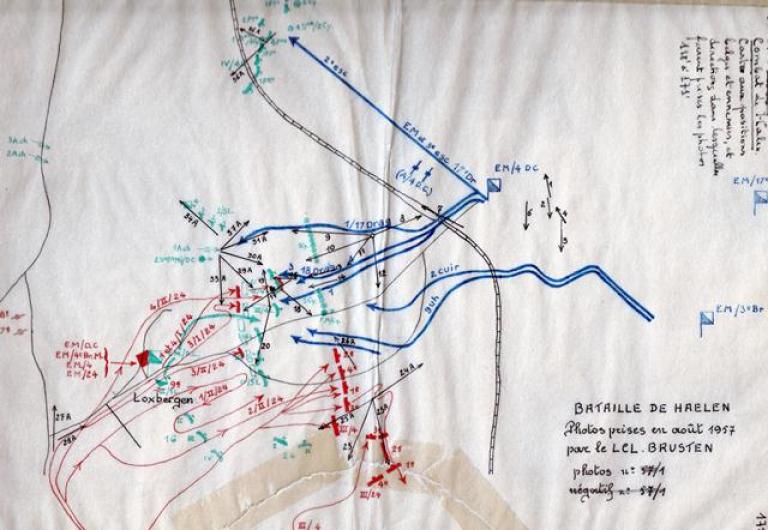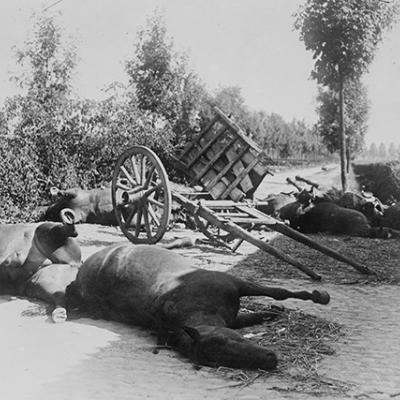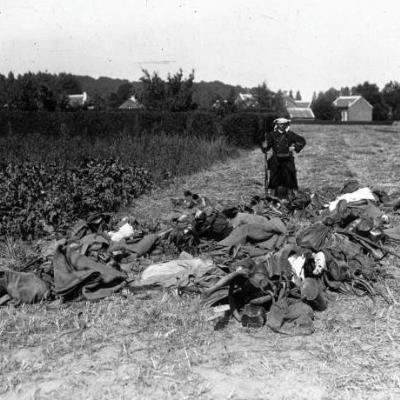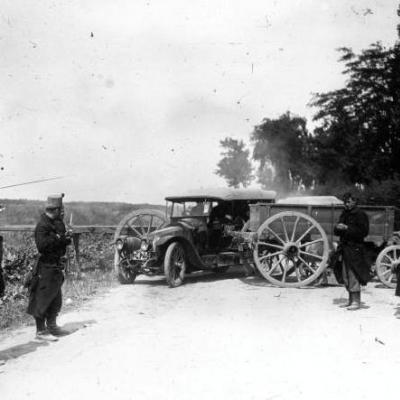Gete and Demer
The fortresses of Liège held out until 16 August and those of Namur until 25 August.
Meanwhile the field army could retreat to the ‘Réduit national’ (National Redoubt) in Antwerp. Several delaying fights were waged in the surroundings of Tienen (e.g. at Halen).
On 11 August the Belgian army command was convinced that the German troops, who were advancing in a northerly direction from Sint-Truiden, Borgloon and Hasselt, would threaten Diest. General De Witte had to defend a line going from Drieslinter to Halen with only limited armed forces.

At 8.10 a.m. Cyclists opened fire at the Gete bridge on about twelve horsemen advancing on Halen from Herk-de-Stad. The Belgians, who by now had two Hotchkiss machine guns, put up their defence around a brewery, but when the Germans called in their artillery, they were driven away together with a large part of the Halen population. Pioneers (Cyclists’ engineers) blew up the bridge but it only collapsed partially allowing about a thousand Germans to occupy Haelen. Due to this easy victory the Germans would later launch overconfident cavalry attacks.
The German cavalry, convinced of their superiority, opted for a direct cavalry attack. When the 17th and 18th Dragoon Regiments rode into Halen, the German troops got stuck and were suddenly fired at by Belgian artillery.
Meanwhile the Cyclists, who had yielded the bridge across the Gete river in Halen, took up position north of the Yser brook. However, they did not have enough time to dig themselves in and were attacked by infiltrating German Riflemen.
During the battle 160 Belgians were killed. 140 German soldiers were killed, 600 wounded and more than 200 taken prisoner. German and Belgian cavalry troops lost more than 400 horses.
The Belgian fallen soldiers rest on the Belgian military cemetery of Halen.
More information : Museum Halen




